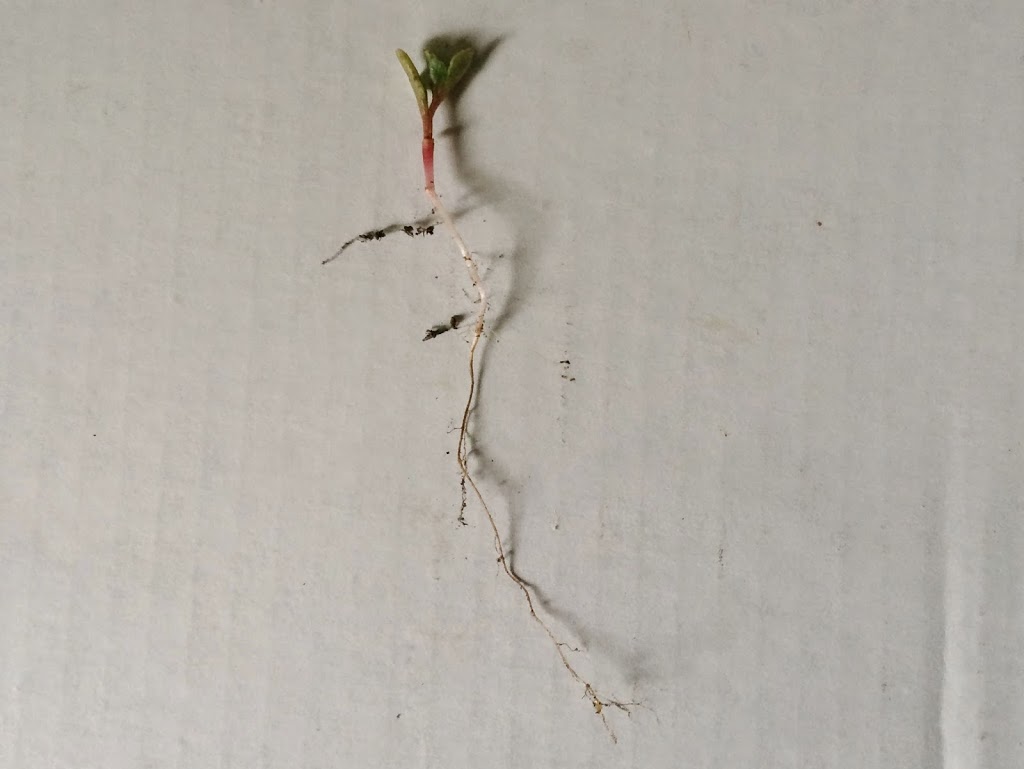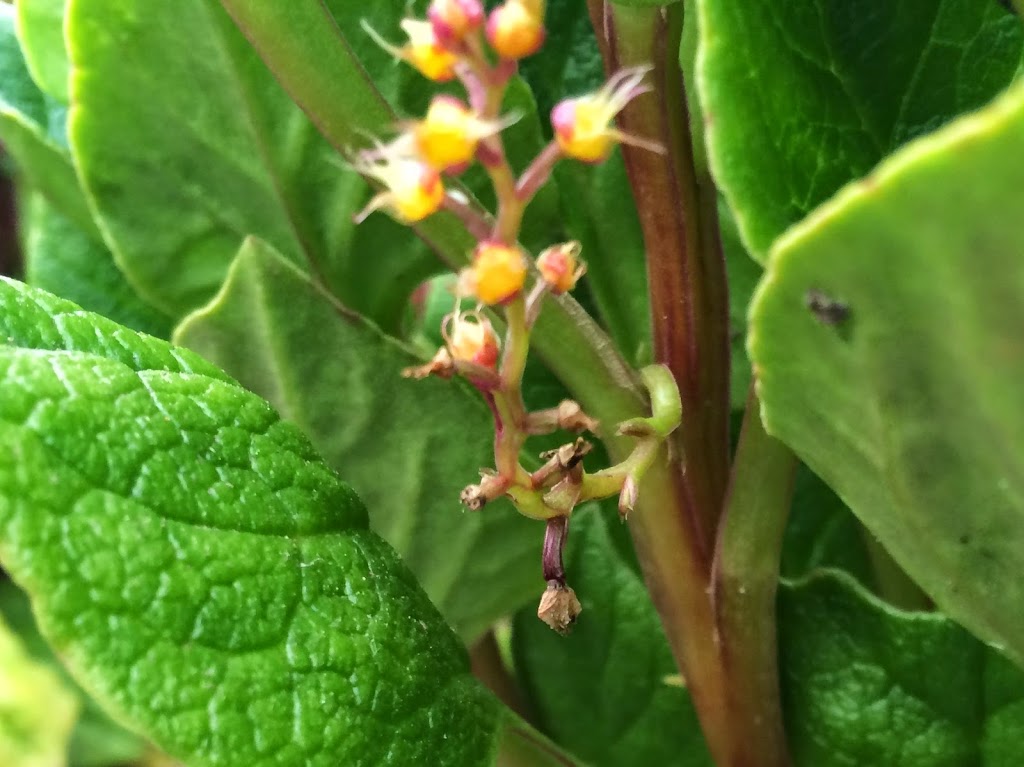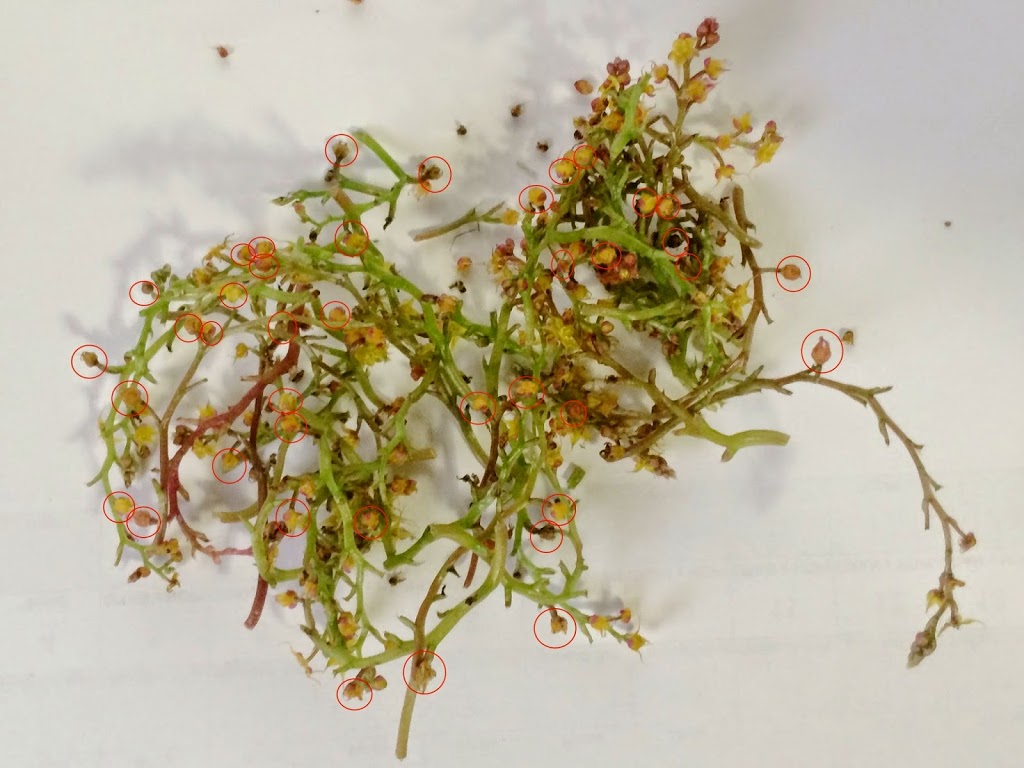No products in the cart.
Blog, ulluco (Ullucus tuberosus)
Ulluco: Ulluco Seed 2: This Time It’s Boring!
Sequels are almost always disappointing and the followup to last year’s ulluco seed discovery is no exception. I had hoped by now to be able to report germination of some of the seeds that I collected last year, but I can’t do so conclusively. I think that a couple of seeds have germinated and then failed shortly thereafter, as the seeds have split open to reveal what looks like an embryo. These seeds have not succeeded even in unfurling cotyledons though, so there may be something else going on.
I did find something interesting in the bed where I collected seeds last year. This ulluco plant appears to be a seedling:
 |
| Possible ulluco volunteer from seed |
It is possible that it became disconnected from a small tuber, but the roots don’t look that way to me. I’ve moved it to a pot for further evaluation at the end of the season.
I’m having fairly good luck with ulluco seed again this year, although I am somewhat embarassed to detail the amount of time that I have spent on it. I spend about eight hours each week doing hand pollination and about four hours searching out and collecting seeds. For that investment of roughly 72 hours so far this year, I have collected 79 seeds. So, roughly one seed per hour. Ouch. I have listened to some good audio books along the way though.
As with last year, I am getting much better results with plants on which I have done hand pollinations. This year, I reserved some plants as controls to try to determine whether all that fussy work with a tiny paint brush is really necessary. So far, I have collected 78 seeds from plants on which I’ve done hand pollinations and 1 seed from plants on which I haven’t. It’s a beauty though:
 |
| One nearly-mature seed hanging at the bottom of the inflorescense |
This does inspire the hope that, if I grow an even larger number of plants, I might be able to dispense with hand pollination. Of course, if I have to search a much larger number of plants for less frequent seeds, it’s probably a wash.
This year, I have collected seeds from the following varieties, ordered from most to least:
1. BK10425.2
2. Chugua Roja
3. Pica de Pulga
4. BK08607.1
5. Cusco Market
5. White/Pink Spots
BK10425.2 and Chugua Roja each set many more seeds than the other three varieties combined.
I collect seeds by removing the entire inflorescense whenever I spot a seed that within roughly a week of maturing. The seeds are so difficult to find in the dense ulluco foliage that I’m afraid I’ll never find the same one twice. In the picture below, I’ve circled the seeds. If you stare at the picture for a while, it may help you to recognize seeds on your own plants. I wouldn’t be surprised if other people have seeds on their plants but just havn’t learned to notice them yet.
 |
| This tangle of inforescenses is the product of a four hour ulluco seed hunt over 150 row feet of ulluco |
To spot ulluco seeds, look for:
* Anything that is still attached below a gap on the inforescence where the higher flowers dropped.
* Thickened or different colored pedicels (very apparent on BK10425.2 and Pica de Pulga, but not on Chugua Roja).
* Flowers that look slightly larger than others when closed (probably really a seed still covered by sepals).
When uncertainty prevails, squeeze. Seeds harden early and don’t yield to fingertip pressure.
Of course, you might be wondering why you should go to the effort of searching out ulluco seeds if the damned things don’t germinate. That is certainly a problem that needs solving. I plan to try to force the issue this year by doing embryo culture. This involves dissecting the seed and removing the embryo from the testa. This eliminates the tissues that are typically responsible for enforcing dormancy. The embryo can then be grown in sterile culture, from which point it develops in the usual fashion.
That all sounds wonderful and it is fairly trivial with large seeds. Unfortunately, ulluco seeds are pretty small and the dissection is not going to be easy. I hope to get 300 seeds this year, which might be enough to allow for mangling them as I ascend the learning curve. If I get enough, I will also set some aside for regular germination experiments at different temperature and light levels and perhaps supplemental hormones as well.
